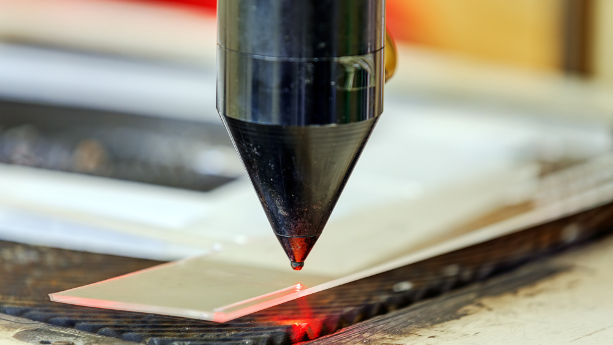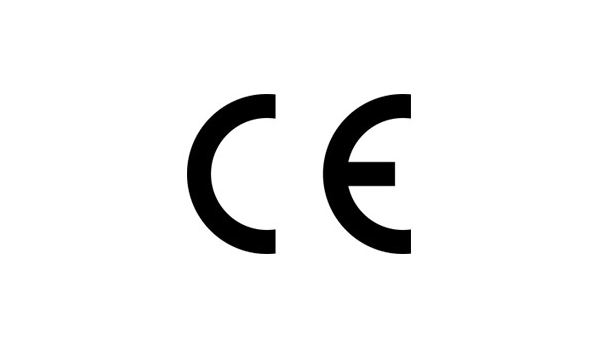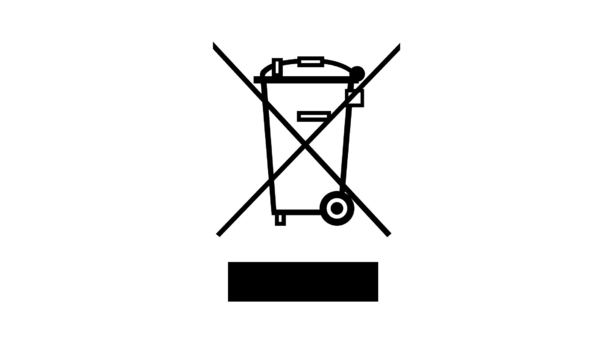
Laser devices cover everything from basic laser pointers to hair removal lasers and laser welding machines. In this guide, we cover European Union compliance requirements for a wide range of laser applications in cosmetic dermatology, medical devices, machinery, and measurements.
Content Overview

FREE CONSULTATION CALL (30 MIN)
 Ask questions about compliance requirements
Ask questions about compliance requirements Countries/markets:
Countries/markets:
 Learn how we can help your business
Learn how we can help your business
You will speak with:Ivan Malloci or John Vinod Khiatani
Mentioned Products
- Laser light show projectors
- Laser acne treatment devices
- Laser pointers
- Laser welding machines
- Laser cleaning machines
EN 60825 – Safety of Laser Products
EN 60825 applies to laser products emitting laser radiation in the wavelength range 180 nm to 1 mm. This standard is composed of several parts:
Part 1: Equipment Classification and Requirements
Part 2: Safety of Optical Fiber Communication Systems
Part 3: Guidance for Laser Displays and Shows
Part 4: Laser Guards
Part 5: Manufacturer’s Checklist for IEC 60825-1
Part 12: Safety of Free-Space Optical Communication Systems Used for Transmission of Information
Part 13: Measurements for Classification of Laser Products
Part 17: Safety Aspects for Use of Passive Optical Components
Some parts of the standard have been withdrawn in the past years. Below, we discuss the general classification, labeling, and test methods for laser devices, according to this standard.
Laser Classification
EN 60825-1 classifies laser products into different categories according to their hazard levels and application field. The hazard level of the lasers increases progressively.
The purpose of setting up the classification system for the laser products is to identify and evaluate the hazard caused by different classes of laser products and take safety operation and protection methods accordingly. Below we briefly describe the different classes.
Class 1
Laser devices under Class 1 are considered safe under all normal operating conditions. For example, game consoles and DVD players fall under this category.
Class 1C
Laser devices under Class 1C are designed explicitly to be in contact with the human skin (except for eye areas). The device shall stop or decrease the power of the laser beam when taken off the skin.
An example of a Class 1C laser product is a household hair removal machine.
Class 1M
Class 1M laser products have a wavelength range from 302.5 nm to 4,000 nm. They might be dangerous if the user views them with optical aids such as magnifiers, binoculars, or telescopes.
An example of a product for Class 1M is a laser printer.
Class 2 and 2M
Class 2 and 2M laser products feature a wavelength from 400 nm to 700 nm. They are considered safe unless the user stares at the beam for a long period of time.
Here we list some product examples for Class 2 and 2M:
- Barcode scanners
- Classroom projectors
- Aiming devices
- Range finding equipment
Class 3R
Class 3R laser products feature a wavelength from 302.5 nm to 106 nm. They can be hazardous when directly viewed, and the risk of injuries increases when viewed with optical aids.
Here some product examples for Class 3R:
- Laser pointers
- Laser scanners
Class 3B
Class 3B laser products have a wavelength that depends on the output power. They can cause immediate skin or eye hazards when viewed directly.
Here some product examples for Class 3B:
- Laser light show projectors
- Industrial lasers
- Research lasers
Class 4
Class 4 laser products have a wavelength that depends on the output power. Class 4 is the highest class in terms of laser hazards. Products that fall under this class can cause immediate severe skin hazards and eye hazards when the user is exposed to either a direct or reflected beam. In some cases, they might even cause a fire.
Here some examples of laser devices that fall under Class 4:
- Automated laser marking machines
- Laser welding machines
- Laser cleaning machines
Testing Standards
EN 60825-1 provides the general principle and reference standards for the evaluation of the laser product classification. Specifically, it refers to the following two standards for the measurement of laser classification method:
a. IEC/TR 60825-13 – Measurements for Classification of Laser Products
b. IEC 61508 – Functional safety of electrical/electronic/programmable electronic safety-related systems – Part 1: General requirements
Also, it describes the safety requirements of laser products according to the different Class and product types such as:
a. EN 60335-1 – Safety Standards for Household Appliances
b. EN 60601-2-22 – Particular Requirements for the Safety of Diagnostic and Therapeutic Laser Equipment
Other parts of EN 60825 might also provide safety aspects and testing standards.
Labeling and Warning
According to the labeling requirements of 60825-1, all laser products shall carry labels to inform about the classification and hazards of the products.
Such labels shall be durable, permanent, legible, and be positioned in a conspicuous location where the users can read them without being exposed to the laser radiation.
Medical Device Regulation (MDR)
The Medical Devices Regulation (MDR) lays down technical requirements, a risk classification system, labeling requirements, and other stipulations for medical devices placed in the EU market, including a large array of laser products.
Product Scope
The application principle of lasers in medical devices lies in its ability to precisely focus light sources with high thermal energy to treat or remove tissues, with higher precision than a regular scalpel. Currently, laser devices are used in dentistry, optics, plastic surgery, and other fields.
According to Annex XVI, the Medical Devices Regulation also covers laser products that are “without an intended medical purpose”.
Here we list some examples of laser products that fall under the scope of the regulation:
- Fractional CO2 laser machines (Acne treatment)
- YAG laser machines (Vision correction)
- Hair removal laser machines
- Tattoo removal machines
- Wrinkle removal machines
EN Standards
The following EN Standards apply to laser equipment for medical, surgical, and therapeutic purposes.
EN 60825 – Safety of Laser Products
As already said, EN 60825 provides detailed guidance on the classification principles based on hazard levels, and safety requirements for laser products, including medical laser devices.
EN 60601-2-22 – Particular Requirements for the Safety of Diagnostic and Therapeutic Laser Equipment
This standard lays down safety and performance requirements for laser equipment classified as Class 3B or Class 4 in EN 60825-1. These products can be used for surgical, therapeutic, cosmetic, or veterinary purposes.
Quality Management System (QMS)
The MDR might require the implementation of a quality management system during the manufacturing as well as the post-market processes. It mandates that the QMS should be proportionate to the risk class and the type of device.
The quality management system shall involve at least the following aspects:
- Strategy for regulatory compliance
- Strategy for safety, performance, and clinical requirement compliance with applicable standards
- Supply chain and risk management in pre-sales and after-sales period
- Establishment of the post-market surveillance system
Machinery Directive
The Machinery Directive concerns the safety and performance requirements for machinery and certain parts of machinery.
This directive requires that laser equipment embedded in the machinery must be designed and constructed in a way to prevent accidental radiation, decrease effective radiation, or reflect, diffuse radiation so that the radiation does not pose health risks to the users.
Product Scope
The following laser devices are under the coverage of the Machinery Directive:
- Leveling laser with orientation instruments for civil engineering applications
- Laser cutter engraving machines
- Show and projection laser machines
- Laser safety curtains
- Active laser safety walls
EN Standards
EN ISO 11553 – Laser Processing Machines Safety Requirements
This standard describes hazards generated by laser processing machines and lays down safety requirements, protection measures, and labeling requirements. This standard does not cover laser machines for medical and therapeutic purposes.
EN ISO 11554 – Test methods for laser beam power, energy and temporal characteristics for lasers and laser-related equipment
This standard specifies test methods to determine the power, energy, temporal characteristics of pulse shape, pulse duration, and pulse repetition rate of a continuous wave of pulsed laser beams.
Low Voltage Directive (LVD)
The Low Voltage Directive applies to electrical and electronic equipment manufactured or imported to the EU. It covers electrical and electronic products that with a voltage rating of between 50 and 1,000 Volts for alternating current and between 75 and 1,500 Volts for direct current.
Product Scope
The Low Voltage Directive covers laser products such as:
- Laser projectors
- Household epilators
- Household age-defying laser machines
- Laser printers
- Game consoles
EN Standards
EN 60825 – Safety of Laser Products
EN 60825 applies to laser products of different radiation intensity, from laser products that emit weak radiation that is safe for the general public to use, to laser products that have so strong intensity that requires users to wear special protective equipment.
In this case, EN 60825 applies to the laser products covered by the Low Voltage Device as listed above.
EN 60335-2-113 – Household and similar electrical appliances: Particular Requirements for Cosmetic and Beauty Care Appliances Incorporating Lasers and Intense Light Sources
EN 60335-2-113 establishes rules concerning the safety of household cosmetic and beauty care appliances incorporating lasers with voltage lower than 250 V. This standard includes laser equipment with a light-emitting surface less than 25 cm2 and is designed to come in direct contact with the skin, which have the potential to pose thermal radiation damage to the skin.
EN 60335-2-113 also covers laser devices that are intended to be used in beauty salons or similar premises for the purposes of beauty care or skin treatment.
EMC Directive
The Electromagnetic Compatibility (EMC) Directive applies to electronic and electrical devices that may cause electromagnetic interference to other devices, including some classes of laser devices.
Product Scope
Electronic products that cause electromagnetic interference to other devices might need to comply with the EMC Directive. This includes products containing laser equipment such as:
- Laser printers
- Laser barcode scanners
EN Standards
EN 61000 – Electromagnetic Compatibility
EN 61000 is an EN standard that is applicable to electronic or electrical devices with a frequency range from 0 Hz to 400 GHz.This standard applies to regulated products used in residential, commercial, and light-industrial environments.
The purpose of this standard is to decrease the electromagnetic interference and increase the anti-electromagnetic resistance ability of covered products.
RoHS Directive
The Restriction of Hazardous Substances (RoHS) Directive applies to electronic products sold in the European Union, including laser devices. This directive aims to regulate the amount of heavy metals contained by the parts and components of the electronic products, such as:
- Lead (maximum 0.1% by weight)
- Mercury (maximum 00.1% by weight)
- Cadmium (maximum 00.01% by weight)
- Hexavalent chromium (maximum 00.1% by weight)
The RoHS also restricts the content of the following phthalates in electronic components to less than 0.1% by weight:
- PBB
- PBDE
- DEHP
- BBP
- DBP
- DIBP
Product Scope
The RoHS Directive also covers electronic products that are equipped with laser equipment, such as:
- Household laser removers
- Laser flashlights
- Laser slingshots
RoHS Components
Importers and manufacturers should ensure their electronic products are made with RoHS-compliant components and parts. As such, importers shall instruct their manufacturer before the material procurement process starts.
General Product Safety Directive
The General Product Safety Directive (GPSD) establishes general safety standards and requirements for consumer products marketed in the EU.
The European Commission specifically released a document elaborating on the general safety requirements for laser products.
The GPSD requires that all consumer laser products shall not cause damage to the eyes or skin when the laser is exposed to the users. In cases when laser products might cause foreseeable damage to the skin, correspondingly high-level safety protection should be compatible with the hazard level.
Product Scope
Here some examples of consumer laser products that fall under the scope of the GPSD:
- Laser pointers
- Battery-powered laser devices
EN Standards
EN 60825-1 – Equipment Classification and Safety Requirements of Laser Products
The above-linked document refers to EN Standard 60825-1 Equipment Classification and Safety Requirements of Laser Products. EN 60825 concerns the safety use of laser products of different intensities. This standard has also been referred to or applied to by other EU directives, such as the Medical Device Regulation and the Low Voltage Directive.
Documentation
This section introduces several documents for laser product importers and manufacturers required by the EU.
Declaration of Conformity
Laser products are covered by one or more CE Directive and, as such, importers and manufacturers should draft a Declaration of Conformity (DoC). A DoC is a self-draft document by either one of the above-mentioned parties demonstrating that the product complies with relevant requirements.
Importers and manufacturers of laser products must also keep a copy of the DoC, which should include information such as:
- Product SKU or batch number
- Importer’s or manufacturer’s information
- Applicable standards and directives
- Valid test reports
User Manual
The user manual is a document that contains safety information and usage instructions of the products. The following is an example of what a user manual for laser products should include:
- Importer’s or manufacturer’s information
- Installation methods
- Parts and components explanation
- Safety instructions
- Usage guidance
- Recharge or refill instructions
- Disposal instructions
- Warranty
Technical File
Importers and manufacturers of laser products should also prepare a copy of a technical file, which is a series of supplementary documentation to the DoC. This file should include information like:
- Product design drawings
- Safety assessment
- A copy of the DoC
- Test reports
EC Type-examination Certificate
An EC type-examination certificate is a document issued by a notified body that certifies that the product complies with the applicable directives and regulations.
For example, laser products that are regulated by the Medical Device Regulation are required to obtain an EC type-examination certificate, unless they are classified as non-sterile Class I devices that have no measuring functions.
Authorized Representative
Non-EU-based importers or manufacturers of laser products are required by the EU market surveillance authorities to appoint authorized representatives before they can place their products in the EU market if they are selling directly to consumers.
The authorized representative is a party that must be based in the EU, who acts as the contact person between the EU authorities and the importers or manufacturers. The responsibility of the authorized representative for a laser product include:
- Ensure the compliance and safety of the laser products
- Maintain the documentation on behalf of the clients
- Cooperate and communicate with the national authority on behalf of the clients
Test Report
Importers and manufacturers should arrange lab tests for their products from a lab testing company, in order to assess product compliance with relevant technical standards and other requirements. After the testing processes, the lab testing company should issue a test report explaining the test results of the product.
As an example, the test report of a hand-held household laser acne treatment machine might include information like the testing standard(s), conformity regulations, and the product specification, e.g.
a. EN 60825 – Safety of Laser Products
b. EN 60601-2-22 – Particular Requirements for the Safety of Diagnostic and Therapeutic Laser Equipment
c. Wave Wavelength (e.g. 644 nm)
d. Radiant power(e.g. 200 UW)
e. Classification(e.g. class IIb)
f. Product photos
Labeling Requirements
This section introduces the labeling requirements for laser products, such as CE marking and WEEE symbol.
CE Marking

The CE mark is required as laser products are covered by one or more CE Marking Directives. The CE marking is usually displayed on the product housing, the product packaging, and the user instruction manual.
WEEE Symbol

The WEEE symbol is required in electronic equipment with laser systems. The WEEE symbol means that the product shall be handled according to the specific requirements for the convenience of recovery and recycling.
Traceability
Product traceability throughout the whole supply chain facilitates market surveillance from the authorities as well as standardization of quality management for importers and manufacturers. It also helps importers or manufacturers quickly take actions to product recall or withdrawal in cases of a serious product malfunction or defection.
Traceability information for a laser product could include the following information:
- Company name
- Company address
- Batch ID
- SKU
Lab Testing
Third-party lab testing is required for the sake of verifying compliance with the applicable directives and safety standards. Many testing companies can also help you assess which directives, regulations, and standards apply to your laser device.
The following labs offer lab testing services for laser products or products that contain laser beams:
- Underwriter Laboratories (UL)
- QIMA
- Bureau Veritas





















.png)
.png)
.png)


Great work!
Please, can you add the new EN 50689:2021 standard requirements?
I am interested in all precautionary documentation regarding the use of handheld fiber laser welders. I have purchased a 2kW model from Leapion in Jinan being delivered tomorrow. I am in New York, USA.